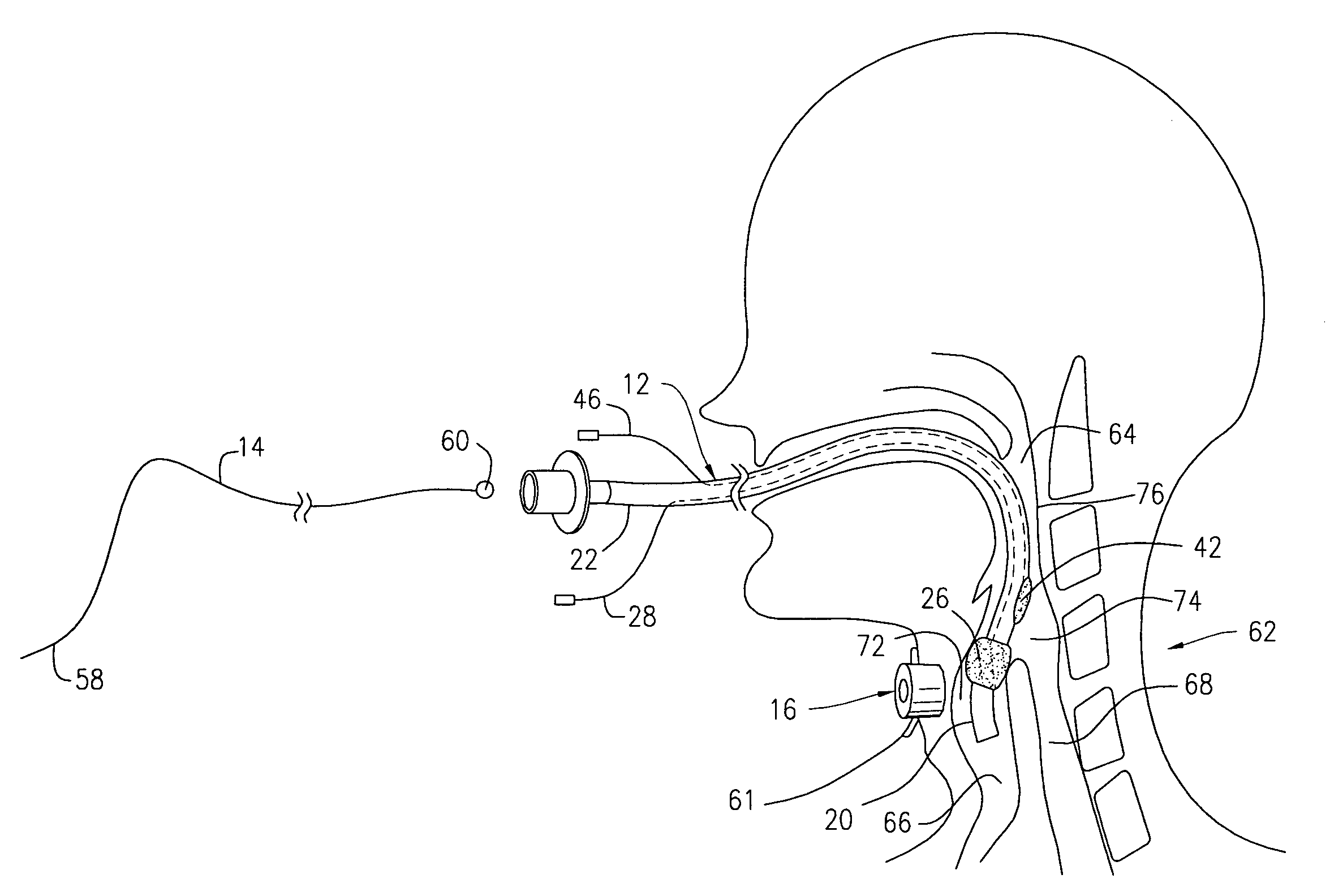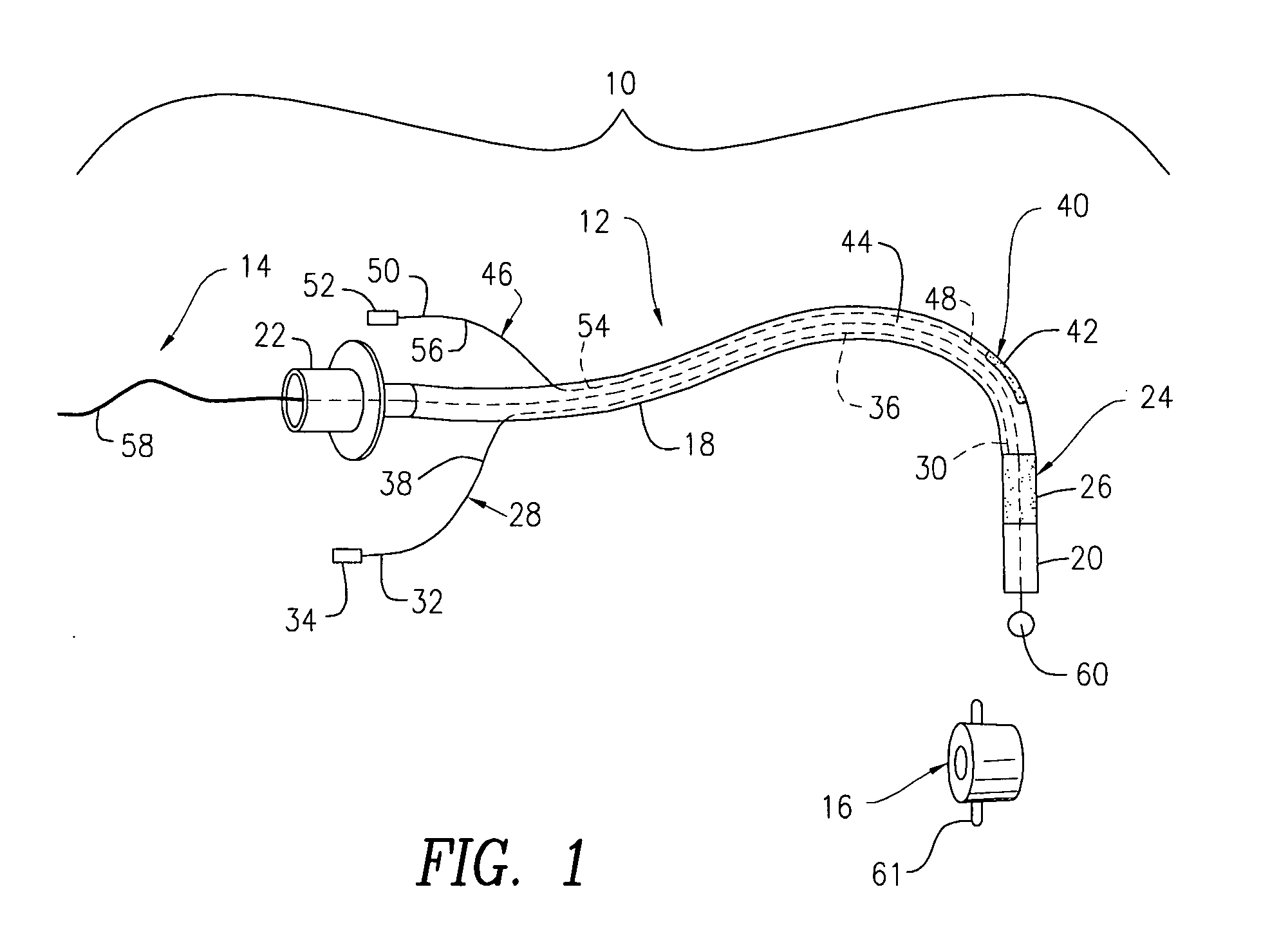System and method for transcutaneous monitoring of endotracheal tube placement
a technology of endotracheal tube and transcutaneous monitoring, which is applied in the field of endotracheal tubes, can solve the problems of increasing operating time, difficult to properly align the tube into the trachea of patients, and blocking the airway of patients' airways
- Summary
- Abstract
- Description
- Claims
- Application Information
AI Technical Summary
Benefits of technology
Problems solved by technology
Method used
Image
Examples
Embodiment Construction
[0016]FIG. 1 illustrates a tracheal intubation device 10 that is used to facilitate ventilation in patients that have blocked airways. The tracheal intubation device 10 includes an endotracheal tube 12, a metal stillette 14, and an external guide system 16. The endotracheal tube 12 includes an elongate tubular body 18 that has a distal end 20 and a proximal end 22. The tubular body 18 can be made from any flexible material known in the art, such as plastic, silicon, and tygon.
[0017]With reference to FIGS. 1 and 2, the endotracheal tube 12 further includes a primary cuff 24 attached to the tubular body 18 adjacent to the distal end 20 of the tubular body 18. The primary cuff 24 includes a first inflatable balloon 26, which extends about the entire circumference of the tubular body 18. For reasons to be discussed hereinafter, the first balloon 26 is sized and shaped so as to inflate into a fully expanded configuration as shown in FIG. 2 and to deflate into a fully collapsed configurat...
PUM
 Login to View More
Login to View More Abstract
Description
Claims
Application Information
 Login to View More
Login to View More - R&D
- Intellectual Property
- Life Sciences
- Materials
- Tech Scout
- Unparalleled Data Quality
- Higher Quality Content
- 60% Fewer Hallucinations
Browse by: Latest US Patents, China's latest patents, Technical Efficacy Thesaurus, Application Domain, Technology Topic, Popular Technical Reports.
© 2025 PatSnap. All rights reserved.Legal|Privacy policy|Modern Slavery Act Transparency Statement|Sitemap|About US| Contact US: help@patsnap.com



